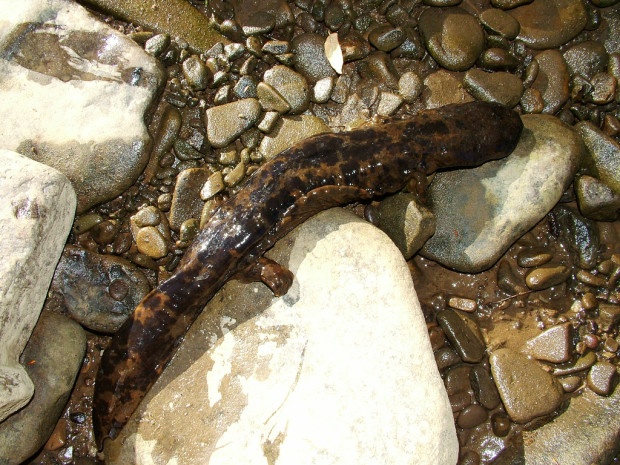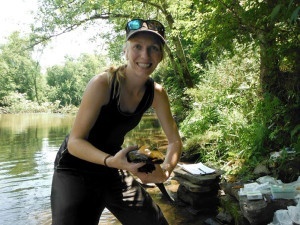We have much more to do and your continued support is needed now more than ever.
The Hellbender Salamander – Our Most Bizarre National Treasure
The hellbender is an animal of contradictions. It has lungs, but is not an air breather. Young hellbenders are fish food, but adults swallow fish whole. Sometimes hellbenders eat other hellbenders. During the breeding season, a single male vigilantly guards the nest … even though he can’t claim full paternity. And perhaps most bizarre is the hellbender’s family tree. Although there are nearly 200 salamander species in North America, the hellbender’s closest relatives live in Japan and China.

Today, hellbenders are found in cold, clear streams in the eastern half of the United States. They spend most of their time hiding under large rocks, never (or very rarely) venturing out of the water. A hellbender will eat just about anything it can swallow, which may be why the species has survived for so long. Yet, in the last few decades, something has changed. Biologists used to find 30, 40, even 50 hellbenders in a single day. Today, you’d be lucky to find 10. In many places, the only hellbenders you’ll find are old adults, vestiges of a bygone era. No one knows exactly why the species is disappearing, but the main culprit is probably sediment pollution.

National Wildlife Week
March 17–23 is National Wildlife Week, and this year’s theme is Wildlife and Water. Learn about more than 50 species of wildlife from across the country that depend on clean water, and find out how you can help protect America’s water for our communities and wild friends.
About the author
Dr. Kimberly Terrell is a wildlife biologist at the Smithsonian Conservation Biology Institute (SCBI) and a 2011 David H. Smith Conservation Research Fellow. Her research focuses on amphibian health, and she is particularly interested in understanding how climate change will affect salamanders in the Appalachian region. Through studies at the National Zoo’s Appalachian Salamander Lab, Kim is investigating the effects of warmer temperatures on North America’s largest salamander, the hellbender. She is also working closely with the Department of Game and Inland Fisheries to help determine the conservation status of hellbenders in Virginia. As part of this work, Kim is developing a citizen science program to detect hellbenders by looking for traces of their DNA in stream water. Kim is actively involved in conservation outreach and maintains a blog at www.SalamanderScience.com. Although she primarily studies amphibians, Kim has worked with a diverse group of species, including cheetahs, wood turtles, and freshwater mussels. But hellbenders are definitely her favorite animal.





















